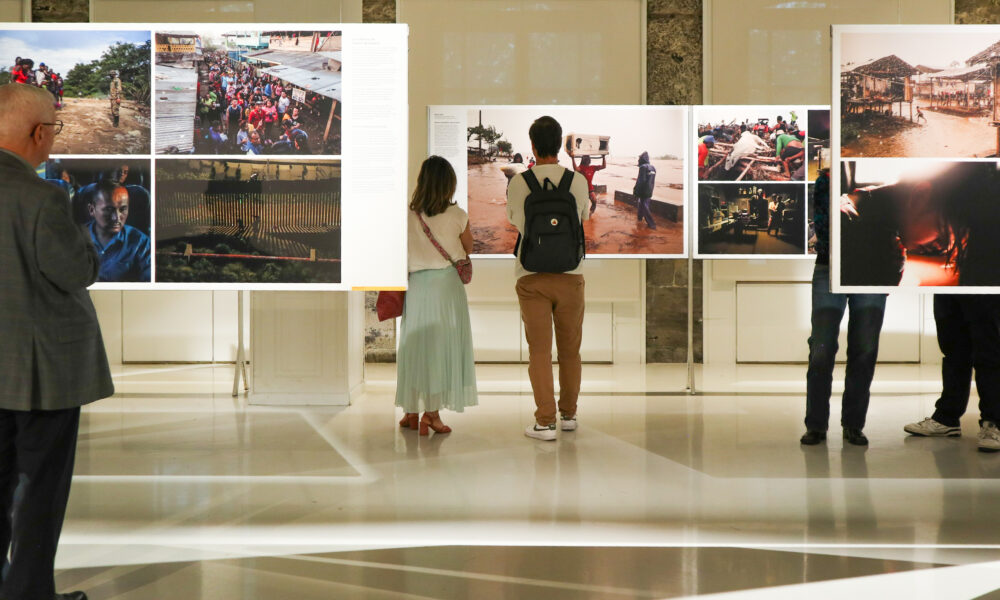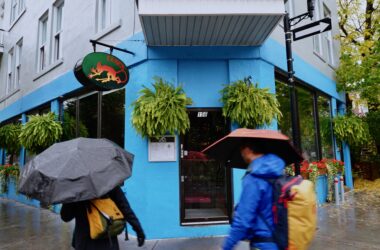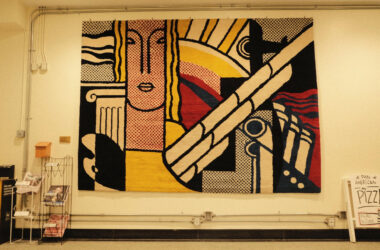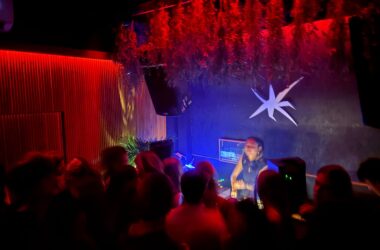The main floor of the market consists of overpriced souvenir shops and a few artisanal stores, visited mostly by tourists. It feels disconnected, fake. However, on the ground floor, facing de la Commune street, you will likely experience something more honest and engaging than in any other museum, monument, or exhibition in Montreal.
This year, the World Press Photo Expo returned to Marché Bonsecours for its annual exhibition. World Press Photo, celebrating its 70th anniversary this year, is an independent non-profit that aims to deepen understanding of the world’s complexities, promote dialogue on overlooked topics, and inspire action through photojournalism and documentary photography. The non-profit holds an annual contest and exhibits the winning photographs in over 80 locations worldwide.
The diversity and scope of the exhibition blow its audience away. It showcases the work of 42 photographers from 30 different countries, representing all corners of the world and centring a vast range of identities. The exhibition masterfully directs attention to the subjects and their stories in stand-alone photographs, such as Samar Abu Elouf’s portrait Mahmoud Ajjour, Aged Nine—which won World Press Photo of the Year—and photo series such as Protests in Georgia, by Mikhail Tereshchenko. These images tell tales of resilience, resistance, war, pain, love, politics, and climate change. Some draw their power from the scene’s beauty, while others capture the raw emotion of their subject. The best do both.
Through Ebrahim Alipoor’s Bullets Have No Borders, visitors walk with kolbars—border carriers—through the mountains of Iranian Kurdistan. These labourers carry heavy goods on their backs from Iraq and Turkey into Iranian Kurdistan under harsh conditions for little pay. The Iranian state’s marginalization of Kurdish people and the ensuing unemployment in Kurdistan leads many to pursue this line of work, deemed illegal by the Iranian government, putting them at risk of being shot by security forces and border patrols. Yet, many kolbars see this activity as legitimate, as they feel ties to Kurds across the Iranian state borders—boundaries that they do not acknowledge.
Alipoor, like many other photographers at the Expo, tell accounts that escape mainstream media, providing his audience with a more intimate and emotional narrative than traditional media can offer. The gentle smiles and soft camaraderie of the kolbars lie in stark contrast with the harsh, blinding light and the ragged, cracked rock of the Kurdish mountains. Warmth emanates from the photographs despite the lack of colour.
In Maria, photographed by Maria Abranches, we follow Ana Maria, a resident of Lisbon, Portugal, throughout her daily activities as a carer and domestic worker. At the age of nine, Ana Maria was trafficked from Angola under false promises of education. Abranches wields natural lighting to create a vignette that surrounds Ana Maria and her possessions across a series of five images, creating the illusion that light radiates from her. She has found warmth and comfort in her occupation in a world that has mistreated her.
While many photographs convey pain and trauma, they are not restricted to those experiences. A common thread that ties the stories together is fortitude, strength, and compassion. It’s found in the subtle act of resistance of Afghan women dancing to music in their home, in the crowds of Bangladeshi and Kenyan youth rising against oppression and corruption, in the hands of healthcare workers and family members tending to an injured Palestinian boy lying on the hospital ground, and in the eyes and the collaboration of Eritrean women who tend to each other in the face of pain, trauma, and loss.
The photographs exhibited in Marché Bonsecours act as windows into countless realities and draw out empathy, admiration, and anger from viewers, fueling discussion and inspiring action, just as World Press Photo aspires to do.
Consult the critical and self-aware guide provided by the Expo for more reflection and visit before October 13th.









